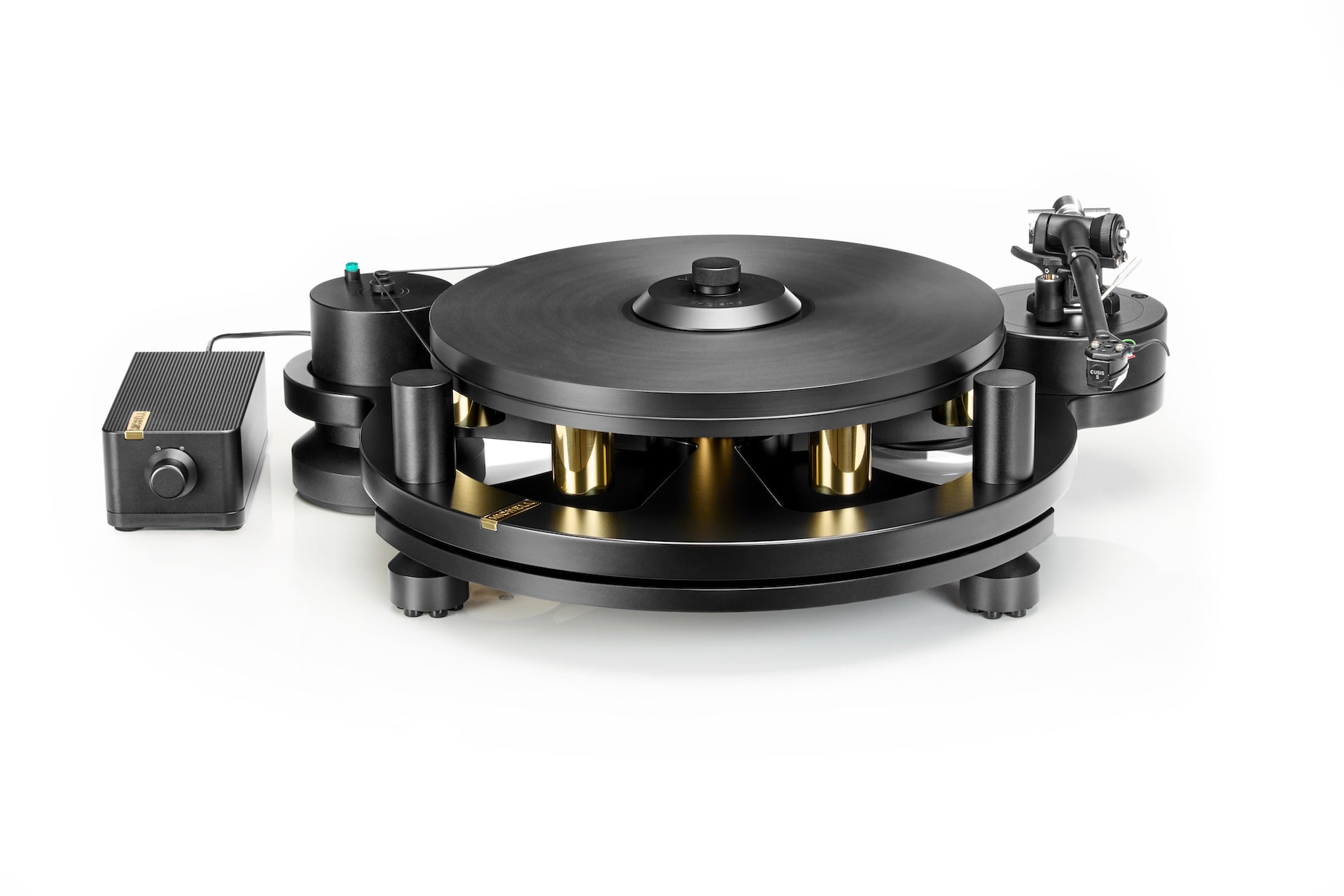
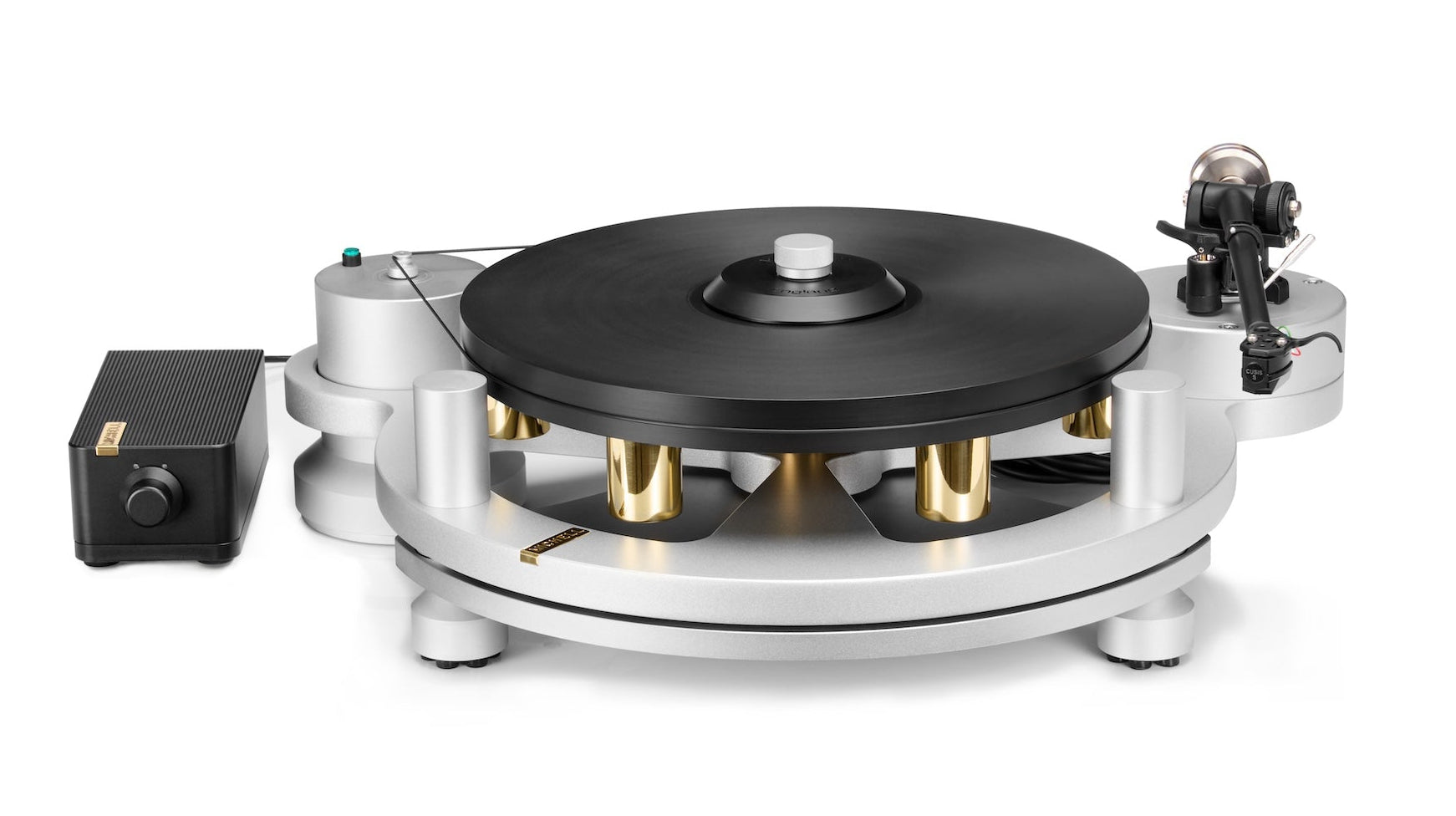
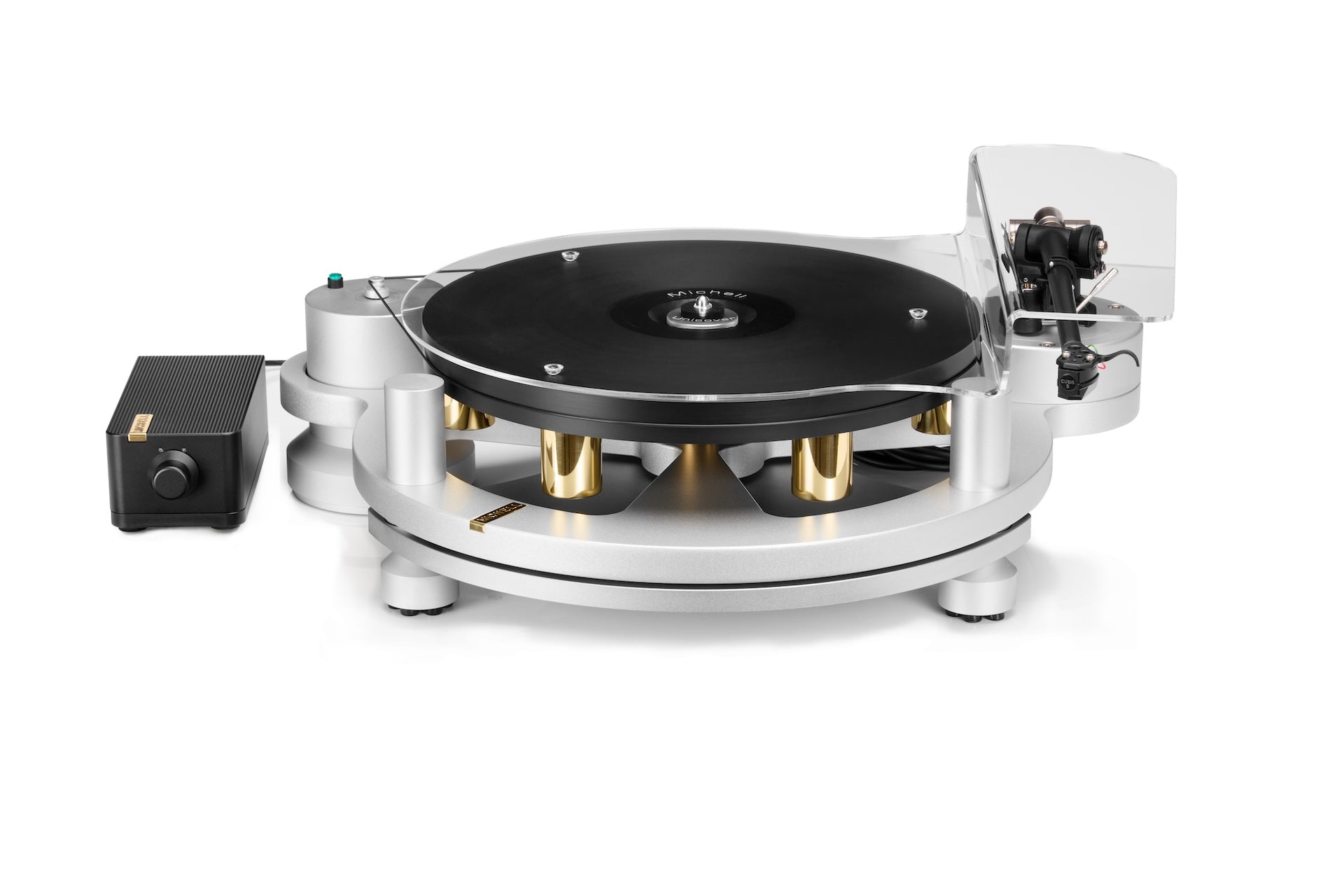
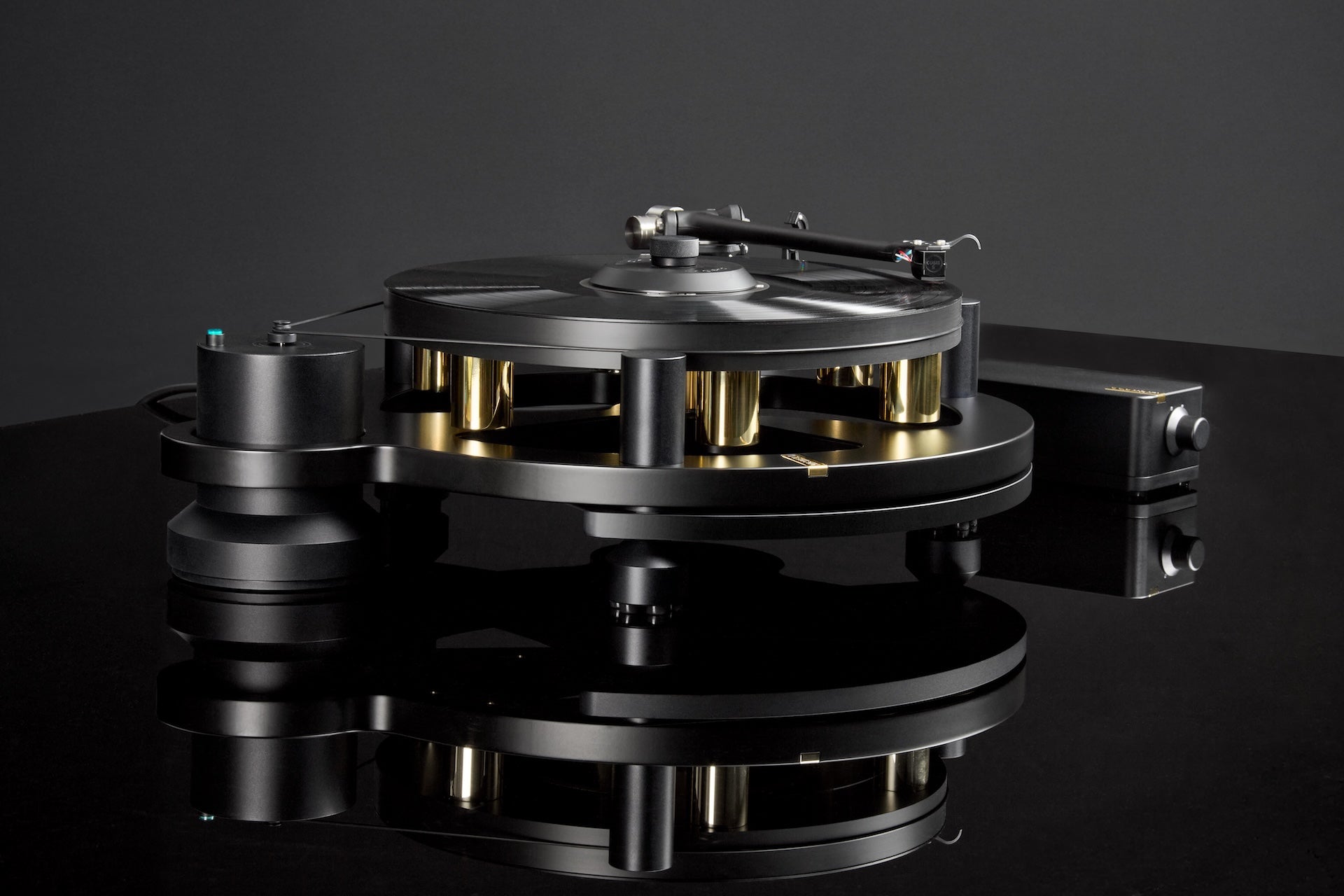
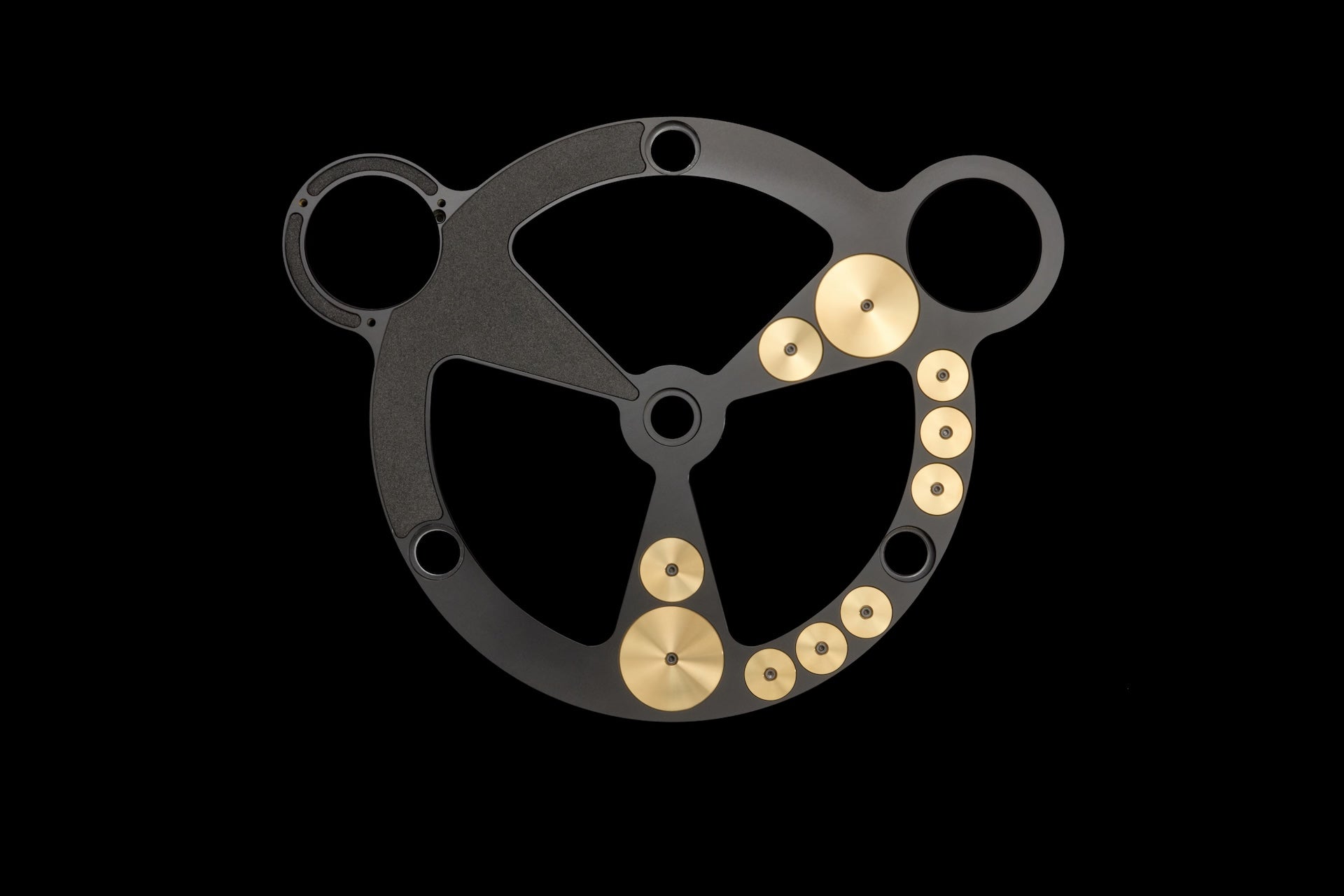
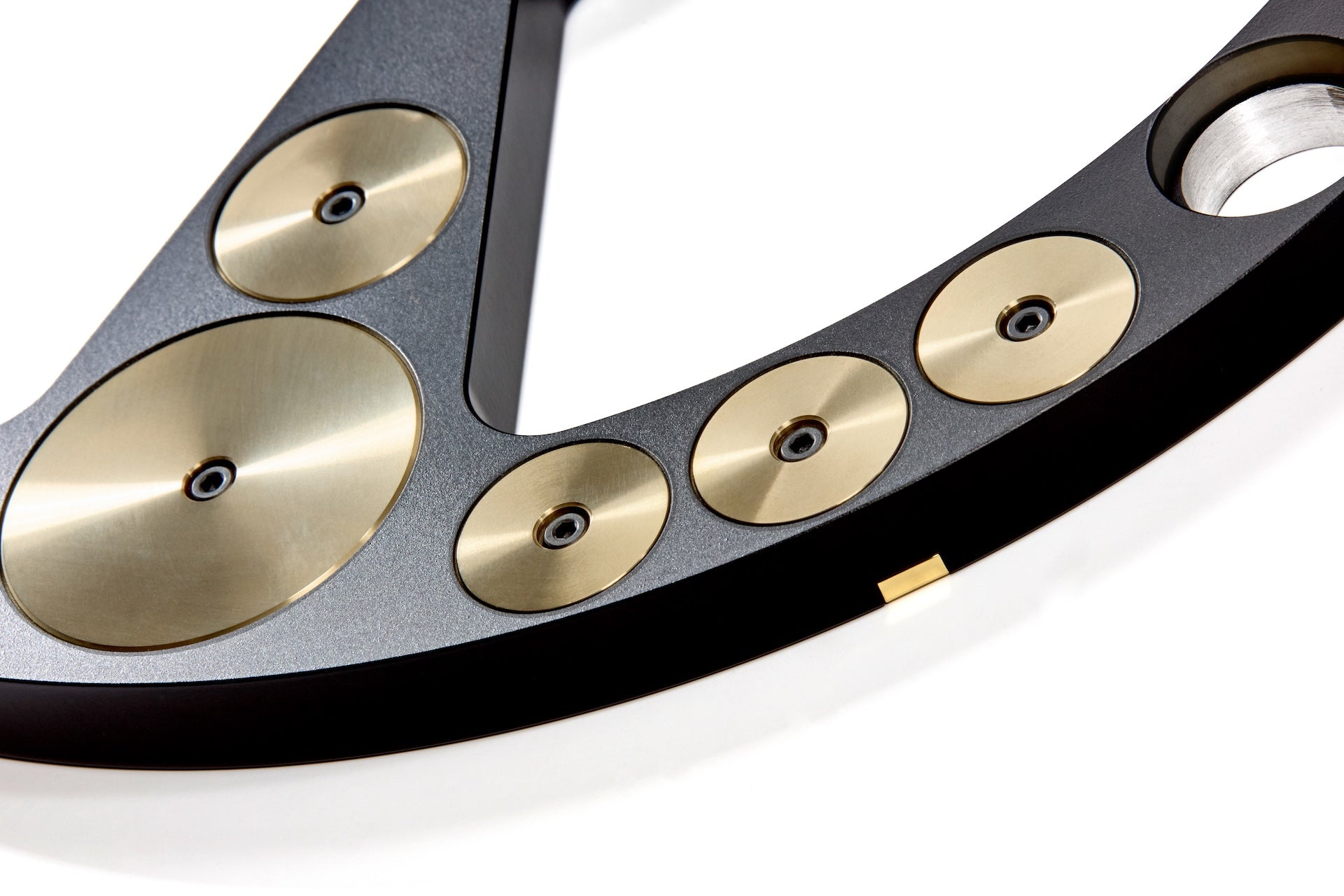
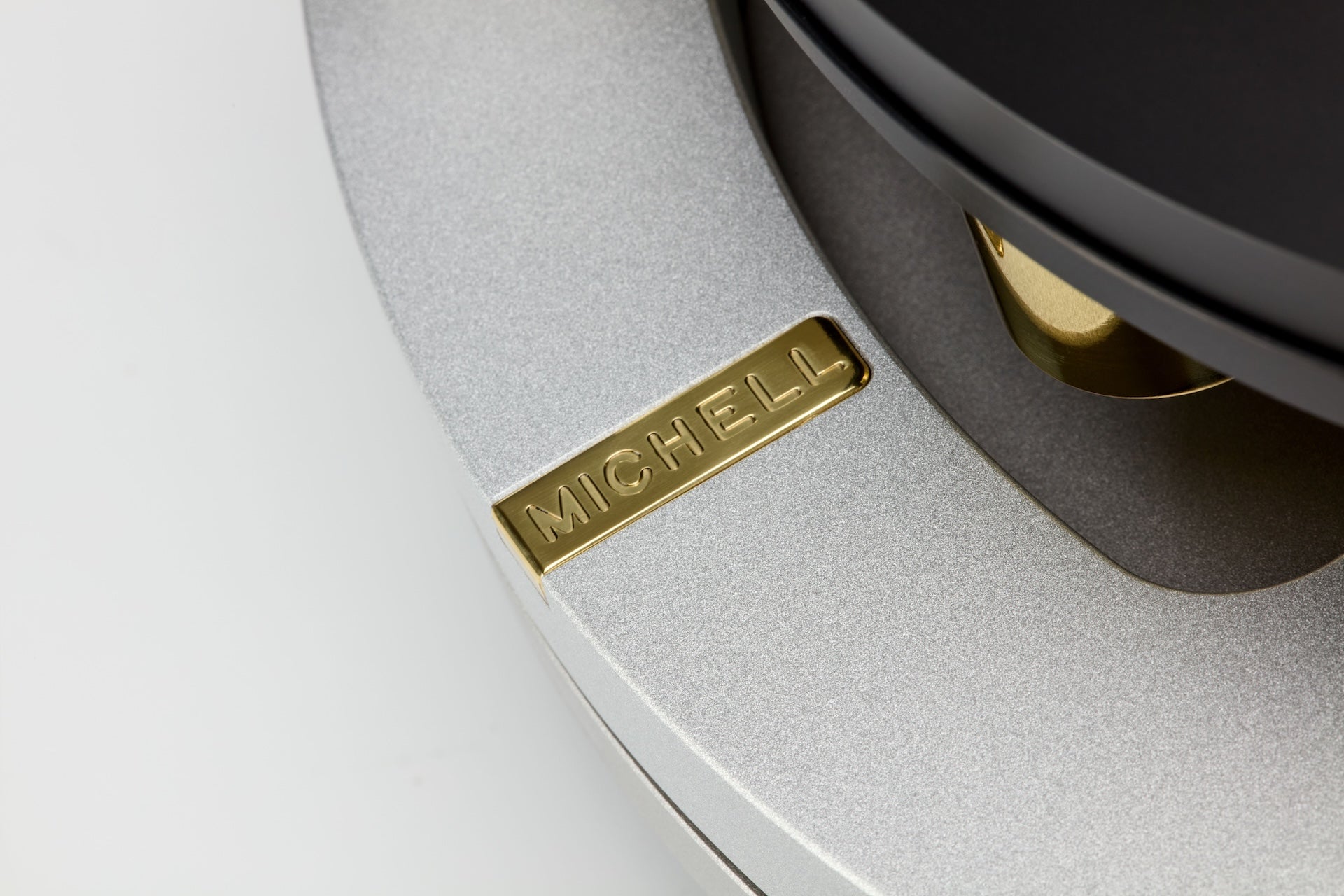
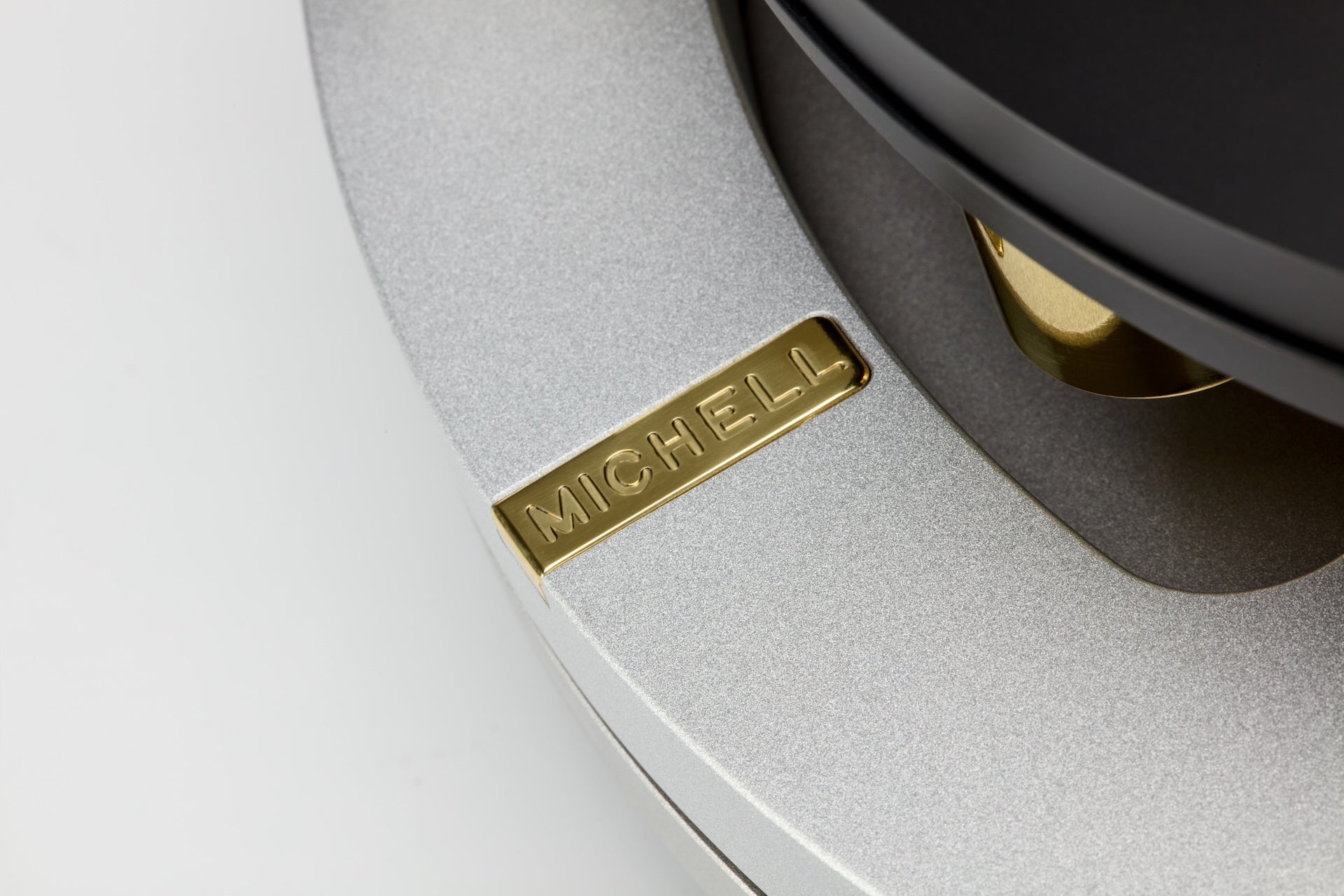
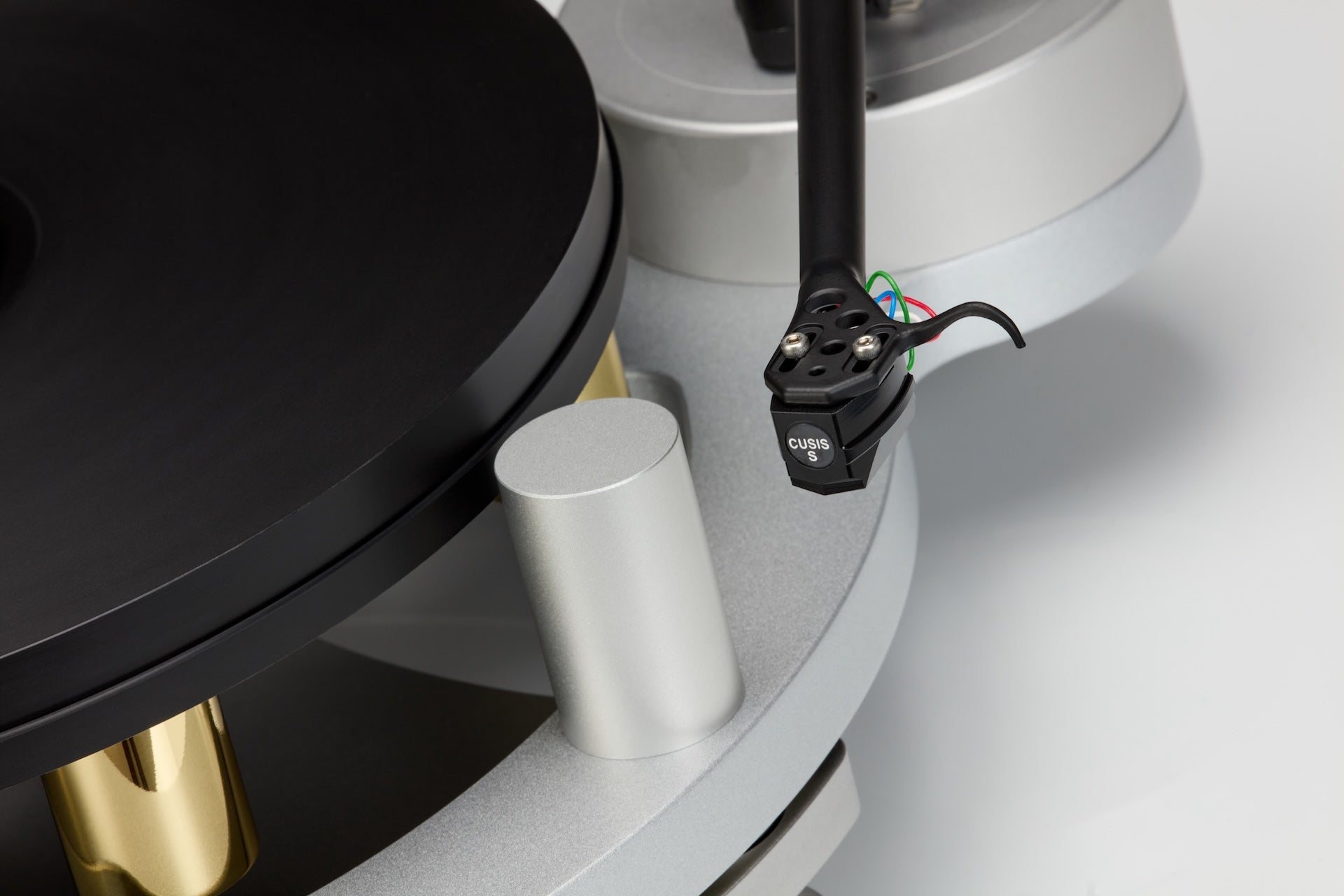
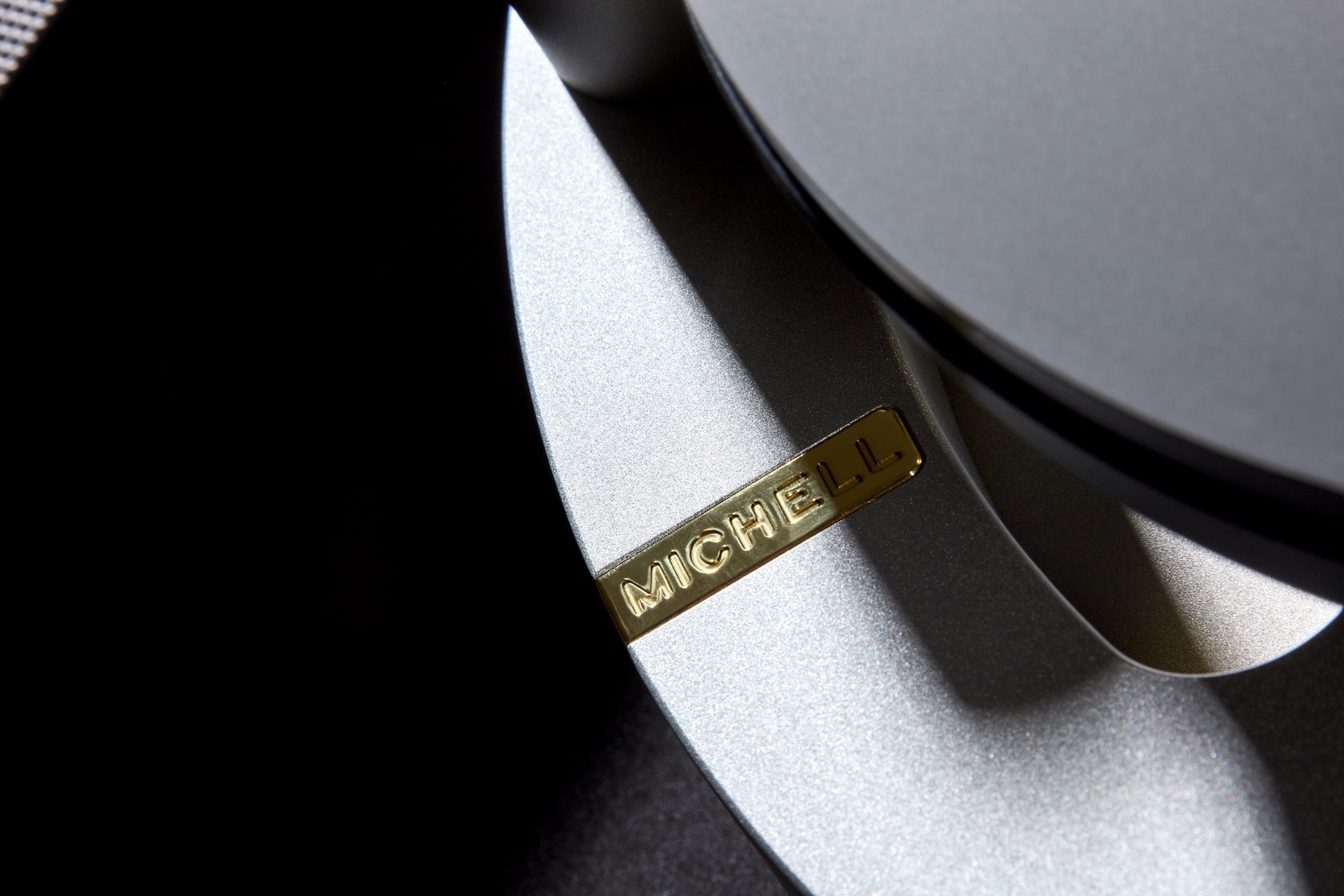
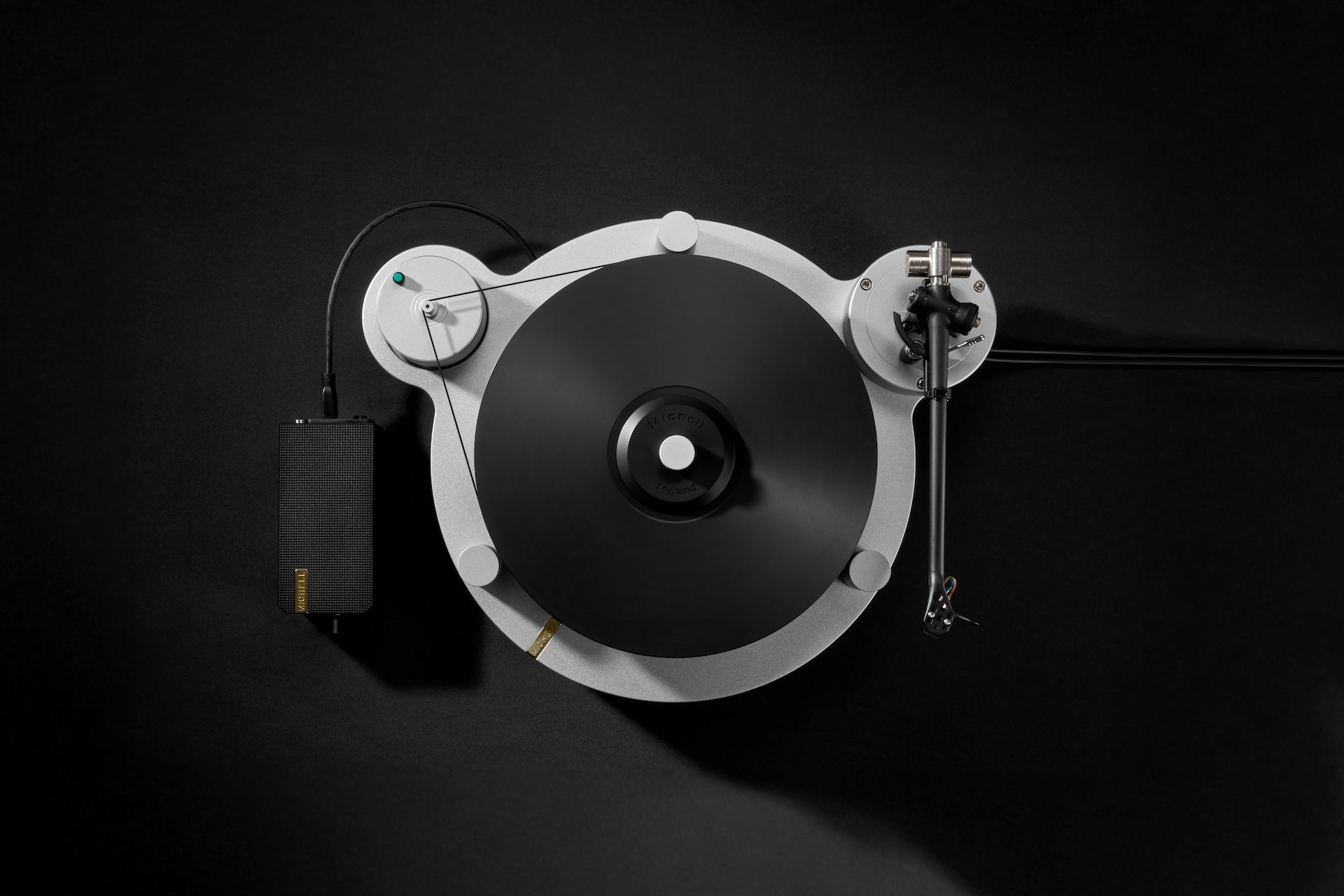
Michell Gyro
Preorder Now!
SRP: $8999 without tonearm, $10998 with TA2 Tonearm
-includes clamp and cover
Evolving an Icon
The Gyro: An Icon of Engineering with Soul
The Michell Gyro has never stood still. Since its debut in the early 1980s, it has evolved through countless incremental refinements, each calculated to improve performance while retaining the original design ethos. Over the decades, its silhouette became iconic, its sound revered, and its place in high-end analogue playback history assured.
This latest Gyro is the most significant —not a reinvention, but a reimagining of everything beneath the surface. It's a ground-up engineering overhaul that delivers dramatic improvements in performance, usability, and long-term reliability—while staying true to the Gyro's unmistakable form.
You know it's a Gyro at a glance, but look closer and listen, and you'll realise just how much is entirely new.
A Chassis Redefined
At the heart of this new Gyro is a complete reworking of the main chassis. Where previous versions used cast aluminium, we now use precision-machined, 19mm aerospace-grade aluminium tooling plate. This material change alone delivers unrivalled accuracy, rigidity, and a low resonance level that was not thought achievable.
Embedded brass weights—carefully calculated and positioned—help balance the tonearm assembly while absorbing vibrational energy. Around the tonearm mount, foam damping inserts suppress reflections, ensuring the stylus/vinyl interaction isn't hampered or the fine musical details masked.
At a Glance: What’s New in the Gyro
-
Solid 19mm aerospace-grade aluminium chassis with integrated brass counterweights
-
AI-modelled vibration control and structural optimisation
-
Precision tonearm coupling replaces Delrin spacers
-
Re-tuned suspension with 3.5Hz frequency and Equilibria™ lateral damping
-
Aluminium baseplate replaces acrylic Spider frame
-
Large Sorbothane™ isolation feet
-
Smoother platter edge – belt groove removed for sleeker aesthetics
-
Motor pod and PSU redesigned with shielding, grounding, and electronic speed control
-
Inverted bearing now features double-helix oil pumping for 2× lubrication flow
Engineering Explained: The Upgrades in Depth
🔧 1. Solid Aluminium Chassis with Brass Energy Control
Before: Cast aluminium chassis with inconsistent density
Now: Precision-machined from 19mm aerospace-grade aluminium tooling plate, with embedded brass counterweights
Why it matters:
The old cast chassis varied in material density, which created unpredictable resonant behaviour. The new solid billet construction ensures uniform mechanical performance across the entire structure. Brass counterweights, embedded in the underside, provide both balance for the tonearm and targeted energy absorption.
What it improves:
-
More efficient energy flow away from the tonearm and bearing
-
Less colouration in the midrange
-
Tighter imaging and more lifelike instrument placement
🤖 2. AI-Optimised Vibration Control
Before: Manual tuning of suspension and damping
Now: Finite Element Analysis (FEA) and AI-assisted simulation used to optimise structural behaviour
Why it matters:
Using advanced digital modelling tools, we simulated how vibrational energy would travel through the new chassis and suspension. This allowed us to fine-tune mass distribution, counterweight placement, and damping zones—ensuring that unwanted energy is redirected and dissipated before it ever reaches the sensitive parts of the turntable.
What it improves:
-
Superior damping and dissipation of structural, mechanical, and stylus-induced vibration and resonance
-
Reduced noise floor
-
Improved rhythm and microdynamics
🧩 3. Precision Tonearm Coupling
Before: Delrin spacers between arm plate and chassis
Now: A rigid metal coupling for direct mechanical connection
Why it matters:
The tonearm is the gateway between stylus and signal. Any flex or play in that connection will compromise timing and clarity. By replacing the semi-flexible Delrin with a machined metal interface, vibrations are more directly drawn away into the mass of the chassis and dissipated by the internal damping zones.
What it improves:
-
Cleaner transients
-
Greater retrieval of low-level detail
-
More ‘blackness’ between notes
🌀 4. Re-Tuned Suspension with Equilibria™
Before: Classic three-point spring system tuned to ~4.5Hz
Now: New suspension system tuned to 3.5Hz with Equilibria™ lateral damping
Why it matters:
Suspension isolates the record from external vibration, but poor lateral control can cause drift or oscillation. Equilibria™ adds a self-centring mechanism that arrests lateral motion while preserving vertical isolation. The retuned 3.5Hz frequency places it below most room-borne interference.
What it improves:
-
Better low-frequency control
-
Improved timing and pitch accuracy
-
Faster settling after movement or footfall
🛠️ 5. High-Mass Aluminium Baseplate
Before: Lightweight acrylic Spider frame
Now: Precision-machined aluminium baseplate
Why it matters:
The suspension needs a rigid and inert reference point to work correctly. Replacing the flexible acrylic Spider with aluminium increases mass, reduces flex, and creates a more stable mechanical ground. This lets the suspension and feet perform more predictably.
What it improves:
-
Bass definition
-
Midrange clarity
-
Isolation from environmental vibration
🧽 6. Sorbothane™ Isolation Feet (Revolv Type)
Before: Small turned aluminium feet
Now: Large composite feet with 6 Sorbothane™ contact nodules
Why it matters:
Sorbothane is an advanced viscoelastic polymer that converts mechanical energy into heat. The feet (first used on the TecnoDec) offer superior vibration absorption and control due to multiple small contact nodes that compress more gradually and efficiently than a single large puck.
What it improves:
-
Quieter background
-
Improved musical flow
-
Greater resolution, especially at low volumes
💿 7. Smoothed Platter Styling
Before: Visible belt groove around Delrin platter
Now: Sleek platter edge for a cleaner look
Why it matters:
While performance remains the same, this small aesthetic refinement gives the new Gyro a more resolved and minimal appearance—bringing the visual experience in line with the precision beneath.
What it improves:
-
Sleeker, more modern appearance
-
Matches clean lines of new base and feet
⚙️ 8. Motor Pod Redesign with Electronic Speed Control
Before: Basic motor pod with manual belt swap for speed
Now: Shielded motor with grounded cable, re-engineered enclosure, and electronic switching
Why it matters:
The motor is a major source of potential interference. By redesigning the pod to minimise electrical and mechanical noise—and adding speed switching via the controller—we deliver a quieter background and smoother playback experience.
What it improves:
-
Easy switching between 33.3 and 45 RPM
-
Lower mechanical and electrical noise
🛢️ 9. Double-Helix Oil Pumping Bearing
Before: Inverted bearing with single-helix oil groove
Now: Inverted bearing with double-helix for 2× oil flow
Why it matters:
The bearing is unchanged in architecture, but now features a second spiral groove that actively draws more oil up to the thrust point. This ensures better lubrication under pressure, smoother rotation, and less wear.
What it improves:
-
Lower friction and wear
-
Improved long-term consistency
-
Greater platter stability and fluidity
The Best Gyro We’ve Ever Made
This is the Gyro evolved — not just in how it performs, but in how it makes you feel.
Every update was made with one purpose: to let the music come through with more focus, more energy, and more emotional connection. To give you a turntable that feels alive — and invites you to slow down, listen deeper, and lose yourself in the moment.
It’s the Gyro. Just more of everything that made you love it in the first place.
Pairs well with

Michell Gyro

